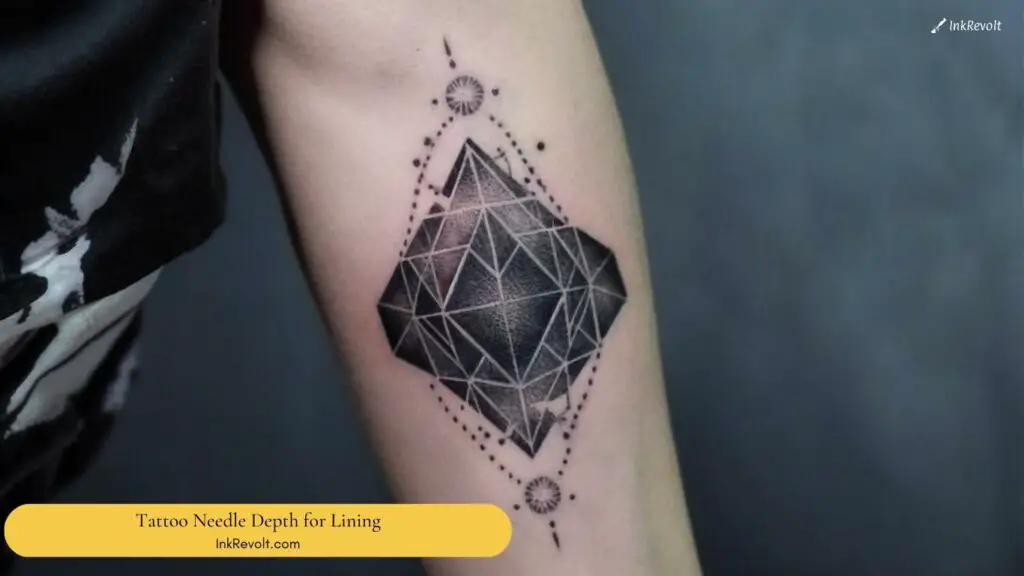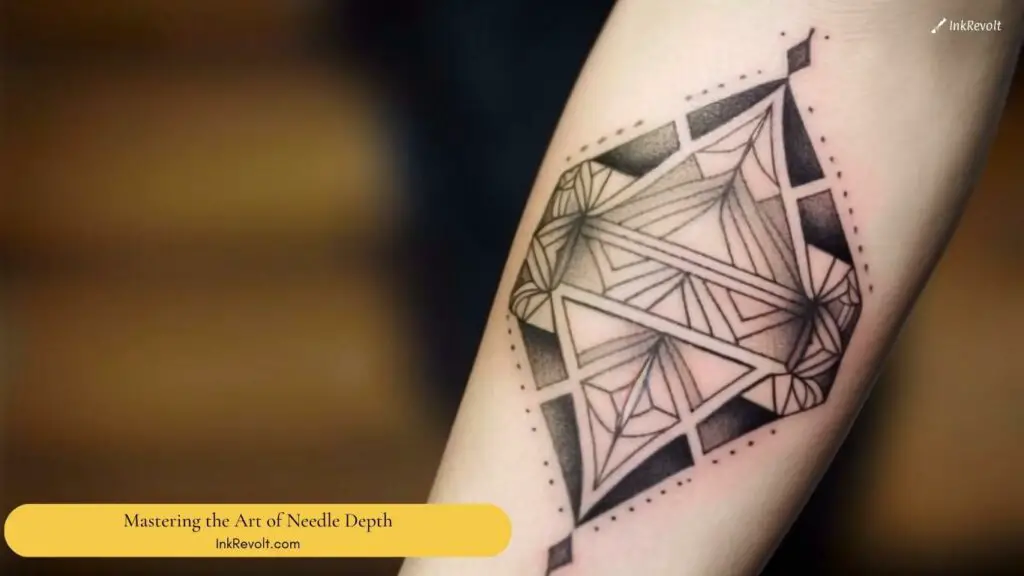Mastering Tattoo Needle Depth for Lining: [Techniques and Tips for Precision]
Tattoo needle depth for lining is an enigmatic and multifaceted topic that can confound even the most experienced tattoo artists. Finding the right needle depth for lining is a delicate art that requires a deep understanding of the complexities of tattooing.
In this article, we will explore the labyrinthine depths of tattoo needle lining, and provide you with techniques and tips for mastering the art of precision.
Understanding the Basics of Tattoo Needle Depth
Tattoo needle depth is the quintessential ingredient for creating a stunning tattoo, and mastering it is essential for any tattoo artist. The intricacy of needle depth involves multiple factors that must be considered when lining a tattoo. Skin type, needle type, and body part all affect needle depth, making it a highly variable and puzzling concept.
Determining the right needle depth for lining requires a combination of technique and experimentation. A deep understanding of the fundamentals of needle depth is crucial to avoid mistakes, such as uneven lines, bleeding, or scarring.

Different Methods to Determine Needle Depth
Traditionally, tattoo artists used the trial and error method to determine the right needle depth. However, with the advancements in technology, adjustable tattoo machines have become popular. They allow artists to set the needle depth according to the skin type and the desired outcome.
It is crucial to use the right needle depth for lining to avoid complications during the tattooing process. The depth of the needle depends on the type of skin and the thickness of the skin. For example, the needle depth for lining on the face is different from the needle depth for lining on the arm.
Read More: What Is A Fine Line Tattoo?
Picking the Right Needle Depth: An Artistic Endeavor
The process of picking the right needle depth for lining is a highly artistic endeavor that requires finesse and technique. The depth of the needle can determine the final outcome of the tattoo, making it essential to get it right.
Factors to Consider When Choosing the Right Needle Depth
The factors to consider when choosing the right needle depth for lining are multifaceted and complex. Some of the essential considerations include:
- Skin Thickness: Skin thickness varies from person to person, making it vital to adjust the needle depth accordingly. Thicker skin requires a deeper needle depth, while thinner skin requires a shallower depth.
- Body Part: Different parts of the body have different skin thicknesses, making it necessary to adjust the needle depth accordingly. For example, lining on the face will require a shallower needle depth than lining on the arm.
- Needle Type: The type of needle used is also a critical factor in determining the needle depth required for lining. Different needles have different diameters, requiring different needle depths to create the desired effect.
Mastering the Art of Needle Depth: Techniques to Achieve Precision

Mastering the art of needle depth for lining requires both technique and practice. Here are some techniques to help you achieve precision:
- Practice on Fruit: Fruit, such as oranges, grapefruits, and lemons, have skin thicknesses similar to human skin. Practicing on fruit can help you gain an understanding of the right needle depth for lining.
- Adjust Depth in Small Increments: Start with a shallower needle depth and increase it in small increments until you achieve the desired effect.
- Use a Ruler: Using a ruler to measure the needle depth before tattooing can help ensure consistency in the needle depth and final outcome of the tattoo.
Common Mistakes to Avoid When Using Tattoo Needles for Lining
Avoiding common mistakes when using tattoo needles for lining is essential for achieving precision. Some of the most common mistakes include:
- Using Too Much Pressure: Using too much pressure can result in uneven lines and damage to the skin.
- Using the Wrong Needle: Using the wrong needle can result in bleeding and scarring.
- Not Adjusting Needle Depth: Failing to adjust the needle depth for different skin types and body parts can result in uneven lines and damage to the skin.
Exploring the Artistic Possibilities of Tattoo Needle Lining
While mastering the technical aspects of tattoo needle lining is essential, it is also important to explore the artistic possibilities it offers. Creating precise, clean lines is a foundational skill for many tattoo styles, from traditional to modern, and is essential for creating stunning tattoos.
By mastering the art of tattoo needle lining, tattoo artists can unleash their creativity and explore new possibilities. From creating intricate designs to using shading techniques, mastering needle depth for lining can open up a world of artistic possibilities.
Embracing the Mystique of Tattooing
Tattooing is an art form that embraces mystique and enigma. The complexities of tattoo needle depth for lining are part of what makes tattooing such a unique and captivating art form. Embracing the mystique of tattooing and exploring the depths of needle depth can be a rewarding and exciting journey for any tattoo artist.
Bursting the Bubble of Misconceptions
There are several misconceptions about tattoo needle depth for lining that can hinder the creative process. One common misconception is that a deeper needle depth is always better for creating precise lines. However, as we have discussed, the needle depth must be adjusted according to the type of skin and body part being tattooed.
Another common misconception is that using a shallower needle depth is always better for delicate areas of the body. While using a shallower needle depth may be appropriate for some areas, such as the face, it may not be suitable for other delicate areas of the body, such as the fingers.
Bursting the bubble of misconceptions surrounding needle depth for lining is essential for tattoo artists to create stunning and precise tattoos.
Frequently Asked Questions
How deep should the needle be for lining?
The needle depth for lining varies depending on the area of the body being tattooed and the type of skin. Generally, the needle depth for lining should be between 1.5 mm to 2 mm.
What happens if the needle is too deep for lining?
If the needle is too deep for lining, it can result in bleeding, scarring, and uneven lines. The ink may also spread, leading to a blurry and unclear tattoo.
What happens if the needle is not deep enough for lining?
If the needle is not deep enough for lining, it can result in incomplete lines, patchy areas, and an overall inconsistent look to the tattoo. This is why it is important to adjust the needle depth based on the type of skin and the area being tattooed.
How does the type of needle affect lining depth?
The type of needle used can have a significant impact on the depth needed for lining. Different needles have varying diameters, which means they require different needle depths to create the desired effect. For example, a smaller needle will require less depth than a larger needle.
What is the difference between lining and shading needle depth?
Lining and shading require different needle depths to achieve the desired effect. Lining requires a shallower needle depth to create precise, clean lines, while shading requires a deeper needle depth to create a gradient effect. It is important to use the right needle depth for the specific technique being used.
Can you adjust needle depth while tattooing?
Yes, needle depth can be adjusted while tattooing. However, it is important to do so carefully and in small increments to avoid damaging the skin or creating an inconsistent look to the tattoo.
What size tattoo needle is best for lining?
The size of the tattoo needle for lining can vary depending on the artist’s preference and the type of design being created. Generally, smaller needle sizes, such as 3RL or 5RL, are commonly used for lining to create precise and clean lines. It is important for tattoo artists to experiment with different needle sizes and find the one that works best for their unique style and technique.
Wrapping Up
Tattoo needle depth for lining is a complex and nuanced topic that requires a deep understanding of the art of tattooing. By mastering the technical aspects of needle depth and exploring the artistic possibilities it offers, tattoo artists can elevate their skills and create stunning tattoos.
Understanding the factors that affect needle depth, using the right needle type, and avoiding common mistakes are all critical to achieving precision in tattoo needle lining. By mastering these techniques and tips, tattoo artists can create beautiful tattoos that showcase their creativity and skill.
Tattooing is an art form that embraces mystique and enigma, and exploring the depths of needle depth is part of what makes tattooing such a unique and captivating art form. By embracing the challenges and complexities of tattoo needle lining, tattoo artists can unleash their creativity and create stunning works of art.
